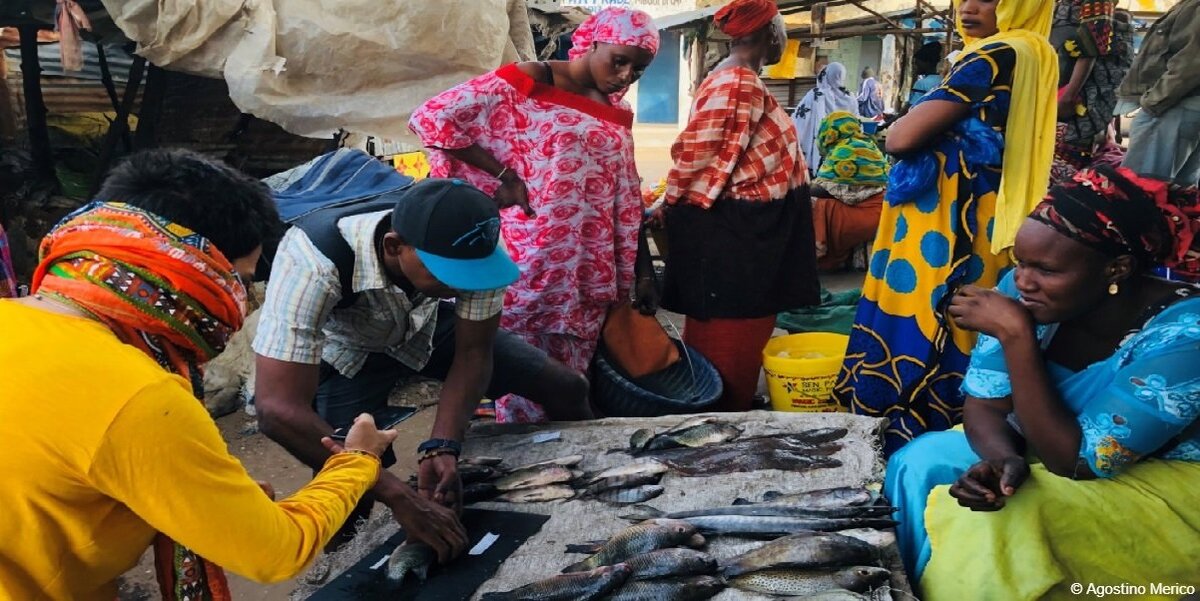
MeerWissen Webinar: Conserving fish functional diversity and promoting a sustainable Blue Economy
The project “Defining socially-inclusive strategies for conserving fish functional diversity and promoting sustainable blue economy” (INDUCE) was introduced on June 10 as part of a webinar series featuring each of the 12 MeerWissen projects. The webinar dealt with the question how conservation strategies can be developed for fish functional diversity and how a sustainable Blue Economy can be implemented in Senegal.
Prof. Dr. Agostino Merico from the Leibniz Centre for Tropical Marine Research (ZMT) and Mr. Kwabena A. Owusu from the African Institute for Mathematical Sciences (AIMS) opened the webinar by outlining the high productivity of Senegalese coasts with hotspots for large populations of fish that are of importance for the Senegalese Blue Economy., While 15% of the "active" population are working in the fishery sector, 80% of the national production is generated by artisanal fishing. However, due to the overexploitation of most species, the landings are low, and the income of local fishermen is declining, says Dr. Adama Mbaye from the Oceanographic Research Center of Dakar-Thiaroye (CRODT). To support long-term economic growth, it is necessary to maintain marine resources at sustainable levels of abundance and to keep a rich fish functional diversity.
According to Mr. Kwabena A. Owusu does the species richness, that has dominated our perception of biodiversity so far, not give any implications on how the functioning of the ecosystem is affected by human induced environmental changes. To develop a more in-depth view of biodiversity, the function that each fish species has within an ecosystem is being investigated by the scientists from AIMS and ZMT. In that way, the effect of exploitation of a species will be projected on the functional biodiversity of an ecosystem that allows the implementation of a more effective conservation strategy.
Samples and photographs were taken on the three Senegalese fish markets Saly, Mbour and Sokone, resulting in a total of 32 species, 646 individuals and more than 12000 morphological data points. Dr. Jailson F. de Moura from the ZMT examined the research to gather these ecological data in a database. He, in cooperation with Dr. Sonja Bejarano, ZMT, calculated traits from these morphological measurements, each of them indicating a species function. Dr. Sonja Bejarano compared the traits and functions of a species with its economic value. She identified patterns of functions that would result in a higher, or lower priced species. The variability of traits per species revealed species that are rather unique and cannot be replaced if overfished. Until now, this link has not been considered in the local conservation plans defining the fish species to be regulated.
For the socio-economic research, Dr. Adama Mbaye, Prof. Dr. Achim Schlüter, ZMT, Mrs. Gougy Sène and Mr. Mouhamadou Hamet Niang, MSc students from the Department of Sociology Cheikh Anta Diop University (UCAD), identified the missions of the governance frameworks and actors and drafted surveys to involve the Local Artisanal Fisheries Council (CLPA), the Local Fishing Committee (CLP), the MPA Management Committee, Interprofessional Economic Interest Grouping (GIE), and other village or neighborhood organizations. These organizations will also be addressed by the end of the project, where a workshop with relevant stakeholders will be hosted to sustain the integration of the scientific results into governmental conservation strategies.
In following steps, the field survey that has been delayed due to the COVID-19 pandemic situation will be conducted. Additionally, information as landing data and the fish’s nutritional value will be added to the set of data.